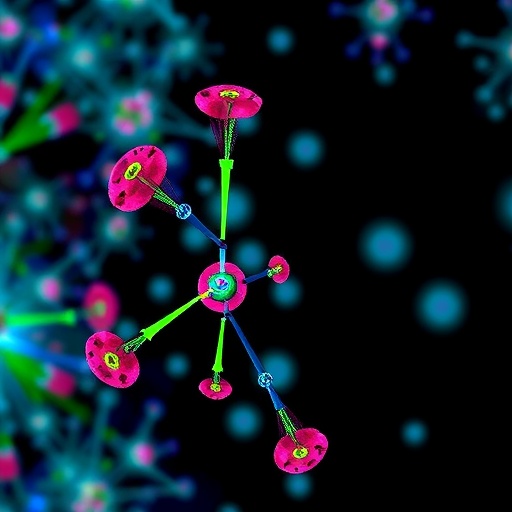In a groundbreaking surgical advancement, researchers from Shanghai Jiao Tong University School of Medicine have introduced a novel technique named FENCY ligation, combined with preoperative embolization, to revolutionize the treatment of giant plexiform neurofibromas (PNF). This innovative approach addresses long-standing challenges in the surgical management of these complex vascular tumors, promising enhanced safety and improved patient outcomes. The detailed findings have recently been published in the prestigious Chinese Journal of Plastic and Reconstructive Surgery, highlighting a significant leap forward in reconstructive surgical methodologies.
Plexiform neurofibromas, benign but often debilitating tumors associated with neurofibromatosis Type 1 (NF1), present an enormous clinical challenge due to their size, location, and highly vascular nature. NF1, a genetic disorder affecting approximately one in every 3,000 newborns globally, manifests in about 25% of patients with these extensive neurofibromas. These tumors can grow exponentially, reaching dimensions that severely compromise both aesthetics and function, oftentimes enveloping critical neurovascular structures, which makes surgical intervention precarious.
Traditional resection of giant PNF has been fraught with difficulties, largely because of the tumors’ intricate vascularization and delicate anatomical positioning. Excessive intraoperative bleeding and the risk of irreversible nerve damage are persistent concerns, frequently impeding complete tumor removal. Dr. Zhichao Wang, the lead investigator behind this surgical innovation, points out that existing techniques inadequately address these hazards, thereby necessitating a method that could not only control hemorrhage but also maintain anatomical integrity during excision.
.adsslot_3i9vgeDyQY{ width:728px !important; height:90px !important; }
@media (max-width:1199px) { .adsslot_3i9vgeDyQY{ width:468px !important; height:60px !important; } }
@media (max-width:767px) { .adsslot_3i9vgeDyQY{ width:320px !important; height:50px !important; } }
ADVERTISEMENT
The FENCY ligation technique addresses these challenges by employing meticulous suture ligation of the tumor’s surrounding vasculature in a systematic “fence-like” pattern. This method acts as both a preoperative and intraoperative hemostasis strategy, significantly reducing blood loss during surgery. When paired with preoperative embolization—which selectively occludes the tumor’s feeding vessels—the combined approach ensures diminished vascular flow, enabling surgeons to navigate the complex terrain of giant PNF with unprecedented precision and safety.
The clinical application of this method was evaluated in a cohort of eleven patients with giant PNFs, with tumor sizes ranging from a median of 30.4 cm to an astonishing 55.6 cm in some cases. Despite the daunting scale and complexity, the surgical team reported remarkably positive outcomes. Patients experienced not only effective tumor debulking but also notable improvements in functionality and quality of life, a testament to the procedure’s enhanced efficacy and safety profile.
What makes the FENCY ligation technique particularly compelling is its applicability to exceedingly difficult anatomical sites, such as the face and neck, where critical structures coexist within tight surgical fields. Operations in these regions traditionally posed substantial risks due to the dense network of nerves and blood vessels. Yet, by employing this dual intervention approach, surgeons successfully mitigated hemorrhagic risks and preserved nerve function, translating into fewer complications and better postoperative recovery trajectories.
Beyond clinical success, this pioneering technique signals a paradigm shift in how surgeons approach neurofibromatosis-associated tumors. The procedural innovation suggests a move towards more refined, precision-based operative practices that prioritize both oncological clearance and the preservation of function, thereby enhancing holistic patient care. Its integration into clinical practice could redefine surgical standards for complex tumor resections.
Furthermore, the researchers emphasized the importance of comprehensive preoperative planning and interdisciplinary collaboration to maximize the benefits offered by the FENCY ligation procedure. Radiologic embolization specialists and plastic surgeons worked in concert, optimizing tumor devascularization before surgical intervention. This synergy highlights the necessity of coordinated efforts to confront the multifaceted challenges presented by giant PNFs.
In terms of postoperative outcomes, patients who underwent the surgery reported significant symptomatic relief and functional gains, including restored mobility and improved facial symmetry where applicable. These improvements were pivotal for patients who had long endured disfigurement and physical impairments due to their tumors, underscoring the transformative potential of the surgical methodology.
Although the initial results are promising, the research team recognizes the need for expanded studies involving larger patient populations and extended follow-up periods. Such investigations are essential to comprehensively understand the long-term implications, durability of reconstructive success, and potential late-onset complications. The team is optimistic that ongoing research will further refine and perfect this technique.
This breakthrough underscores the vital role of innovation in surgical science, particularly for conditions like NF1-associated PNFs where conventional treatments fall short. The FENCY ligation technique, with its methodical approach to tumor vasculature management combined with embolization, presents a beacon of hope for patients and surgeons alike, aiming to push the boundaries of what is surgically achievable.
Moving forward, the anticipated widespread adoption of the FENCY ligation method could reduce perioperative morbidity and set new benchmarks in the surgical treatment of highly vascular tumors. Its success may also inspire similar approaches in other surgical disciplines confronting complex vascular neoplasms, driving forward a new wave of precision-focused operative care.
As the medical community continues to unravel the intricacies of NF1 and related tumor biology, such technological and procedural innovations will remain at the forefront, ultimately enhancing patient outcomes and quality of life worldwide. The collaborative efforts exemplified by the Shanghai Jiao Tong University research team mark a significant milestone on this progressive journey.
Subject of Research: People
Article Title: An innovative resection of giant neurofibromas.
Web References: 10.1016/j.cjprs.2025.06.003
Image Credits: Zhichao Wang, et al
Keywords: Health and medicine, Cancer, Clinical trials, Pediatrics, Cosmetic surgery
Tags: complications in surgical tumor resectionenhancing surgical methodologies for benign tumorsFENCY ligation method for neurofibromasimproving patient outcomes in reconstructive surgeryinnovative surgical techniques for giant tumorsneurofibromatosis Type 1 management strategiesneurovascular structure preservation in surgeryplexiform neurofibromas treatment advancementspreoperative embolization for tumor surgerysafety in giant tumor removalsShanghai Jiao Tong University research breakthroughssurgical challenges in vascular tumors





